It was inevitable, but my shorebird stint (no pun intended) has come to an end, with this, the penultimate entry to the series. I’m going to break this down into four sections based somewhat on genetics, but also somewhat on the “easy” ones and the “hard” ones. The scare quotes are there because, to some people at least, shorebirds of any kind aside from maybe Killdeer and Spotted Sandpipers are entirely a mystery.
I’ll start with the “Non-Peeps”. This includes the Ruddy and Black Turnstone, Red Knot, and Surfbird.
The second group will be the “Peep-like” birds. Typically smallish shorebirds that, to anyone not a birder, and even to some birders who simply aren’t as familiar with shorebirds, all look so similar as to be impossible to distinguish. This includes Sanderling, Pectoral, Sharp-tailed, Purple, Rock, and Stilt Sandpiper, and the Dunlin.
The third group will be the well-defined “Peep” complex. Even more difficult to tell apart from their relatives, there are many photo-guides, tip sheets, and various other quick reference forms to tell these all apart from each other. They include the Semipalmated, Western, Least, White-rumped, and Baird’s Sandpiper.
“Non-Peeps”
Starting with the Turnstones, I have been lucky enough to see both the Black and the Ruddy. By far my favorite to photograph was the Ruddy, though that may have had as much to do with where I saw them as their striking plumage.
Ruddy Turnstones have been recorded all across Canada, in every single province and territory. Their visits to the interior are typically during migration, and spend their summers up along the Arctic Ocean and winter down in Central and South America. They even find their way occasionally to the eastern coast of Asia, Australia, New Zealand, and all throughout western Europe. Clearly they are a popular shorebird due entirely to their beauty!
Their cousins, the Black Turnstones, are nowhere near as attractive. In order to see these guys you’ll have to hit the West Coast. Ranging from the Pacific coast of Mexico, all the way up to Alaska, their Canada records are found in British Columbia and Yukon Territory.
Along with the Black Turnstone in having a range limited to the Pacific Coast is the Surfbird. Sadly, this is one of the few species here I have no photos of this time around, but I’m sure on my next visit out west I’ll make a special effort to tick these birds off my list!
Sadly, one of the other few that I have yet to see, or photograph, is the Red Knot. This is another quite colorful bird that has been recorded in almost every single province and territory, with the only exception being the Yukon Territory. Red Knots are of special concern in North America as they were once hunted for food in huge numbers, and now due to the heavy decline in one of their main food sources during migration, horseshoe crab eggs along the east coast.
The next subcategory is the “Peep-like” shorebirds.
The smallest of these is the Sanderling. A diminuitive, relatively pale and plain little shorebird, it is quite fun to watch it run back and forth as the tide goes out, picking whatever morsels of food are being left behind on the beach. While I have seen these birds in Canada, it doesn’t match anywhere near the quality and distance one can see these birds at on the coast of Mexico. Sanderlings can be found all over Canada, North, Central and South America, and even into Europe and Asia.
Pectoral Sandpipers are much like a blown-up version of a Least Sandpiper. Easily twice the size of a peep, they have yellow legs, a slightly drooping bill, and heavily streaked neck and chest, contrasting heavily with a pure white belly. These birds are also found all over Canada and the USA, and occasionally in Asia and Europe.
In the last month, we had an incredibly rare visitor here in Calgary. A breeding plumage Purple Sandpiper was found at Inglewood Bird Sanctuary by local photographer Eddy Matoud. This is the first record of this species in Alberta, and so I headed out to take some photos of it, specifically with this post in mind! Purple Sandpipers typically are found along the east coast of Canada and the USA, but summer and breed in the high Arctic, making this discovery incredibly unusual!
Alternately, the Rock Sandpiper is found on the west coast, and breeds in Alaska and the islands in the Bering Strait. This is another species that I have very little experience with, and still have yet to see one, let alone photograph one.
Stilt Sandpipers are again similar to the others in this group, but stand apart due to their extremely long legs, long, downward curved bill, and greenish-yellow legs. Again, much larger than the peeps, with significantly different proportions than the other shorebirds listed thus far.
The last of the “Peep-like” shorebirds is the Dunlin. A more uniformly colored, smaller, and shorter legged Stilt Sandpiper, if you please, as it has a proportionately long bill, and is found all across Canada and the USA, but primarily along the coasts.
Lastly, the Peeps. These are the bane of birders both new and old. I’ll start with a few tips to help narrow down the identification. If you’re away from the West Coast of Canada, chances are you’re not looking at a Western Sandpiper.
The leg color can be another good indicator, and if the bird has yellow legs, and appears smaller than all the other shorebirds around, then you’re looking at a Least Sandpiper.
From here on, it gets a bit simpler, as there are only three options from here. If the birds wingtips do not extend beyond the tail, then you’re looking at a Semipalmated Sandpiper.
So now you’re stuck between a Baird’s Sandpiper or a White-rumped Sandpiper. Both of these birds have long wings, but the White-rumped Sandpiper has a distinct, well, white rump, visible while the bird is in flight. If the white rump is visible, you’re looking at a White-rumped Sandpiper. If not, then you’re looking at a Baird’s.
Thanks for reading, and yes, finally, this quick study of the Shorebirds of Canada is at a close. See you again next month for my next installment!



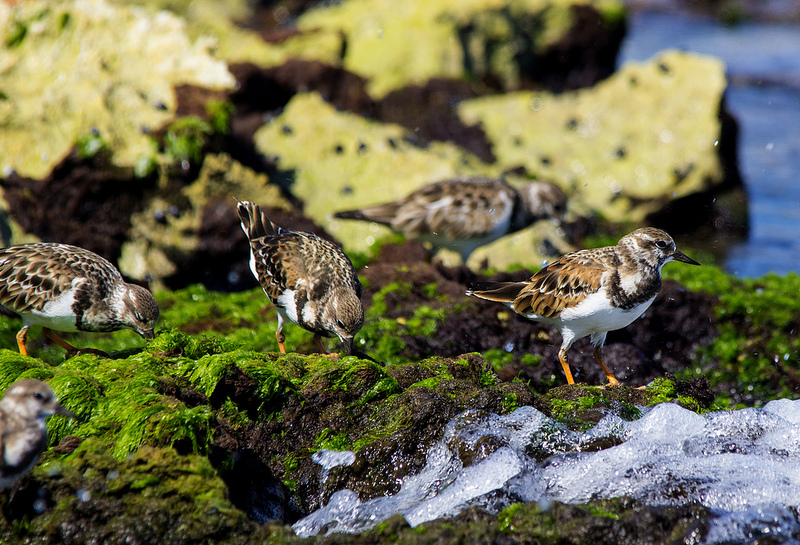

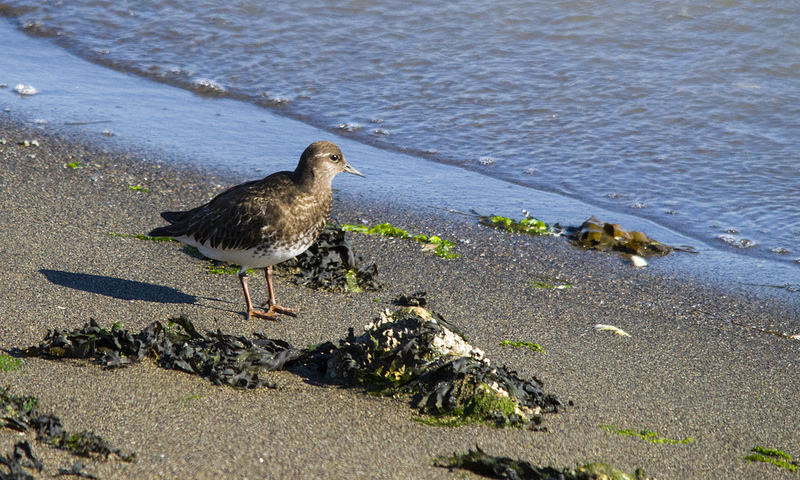
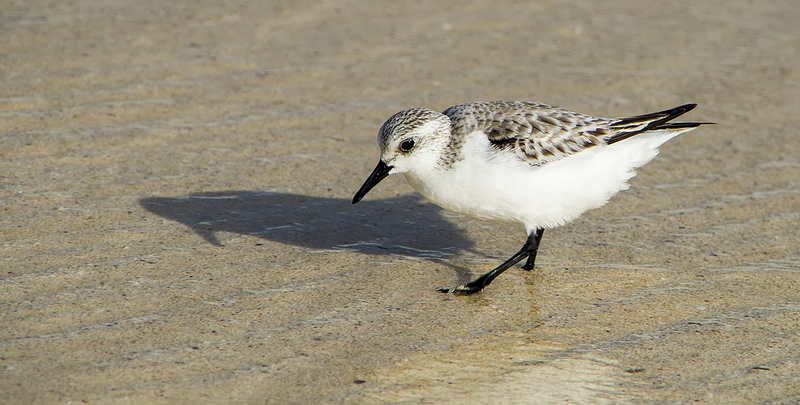
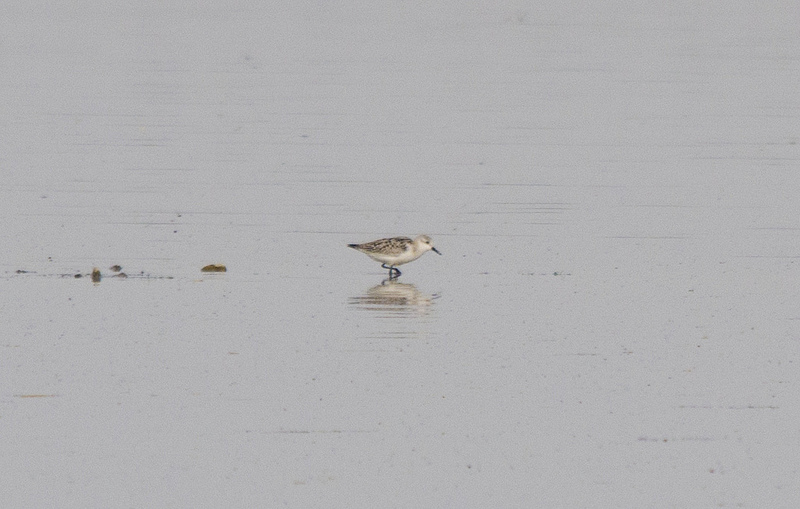
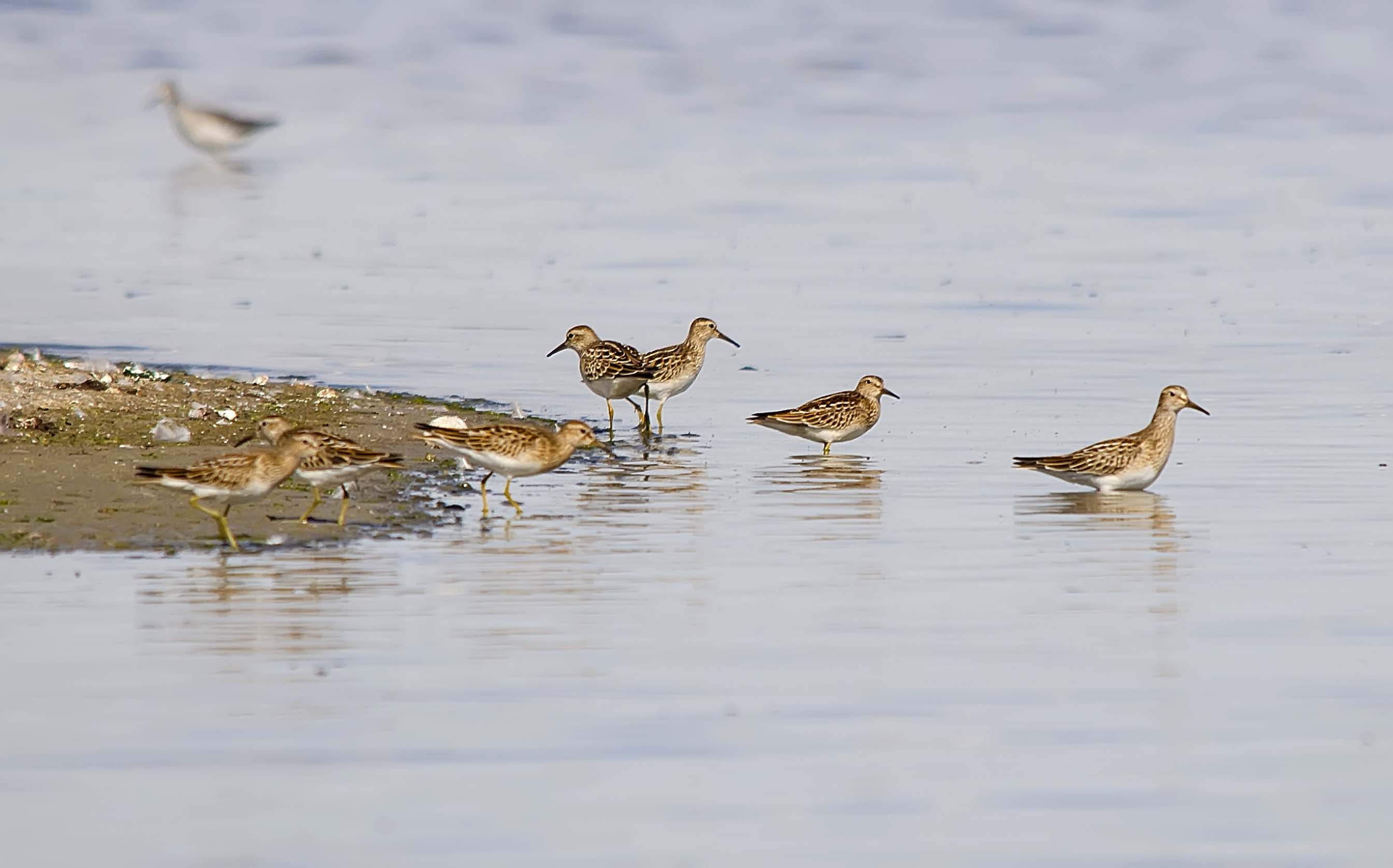
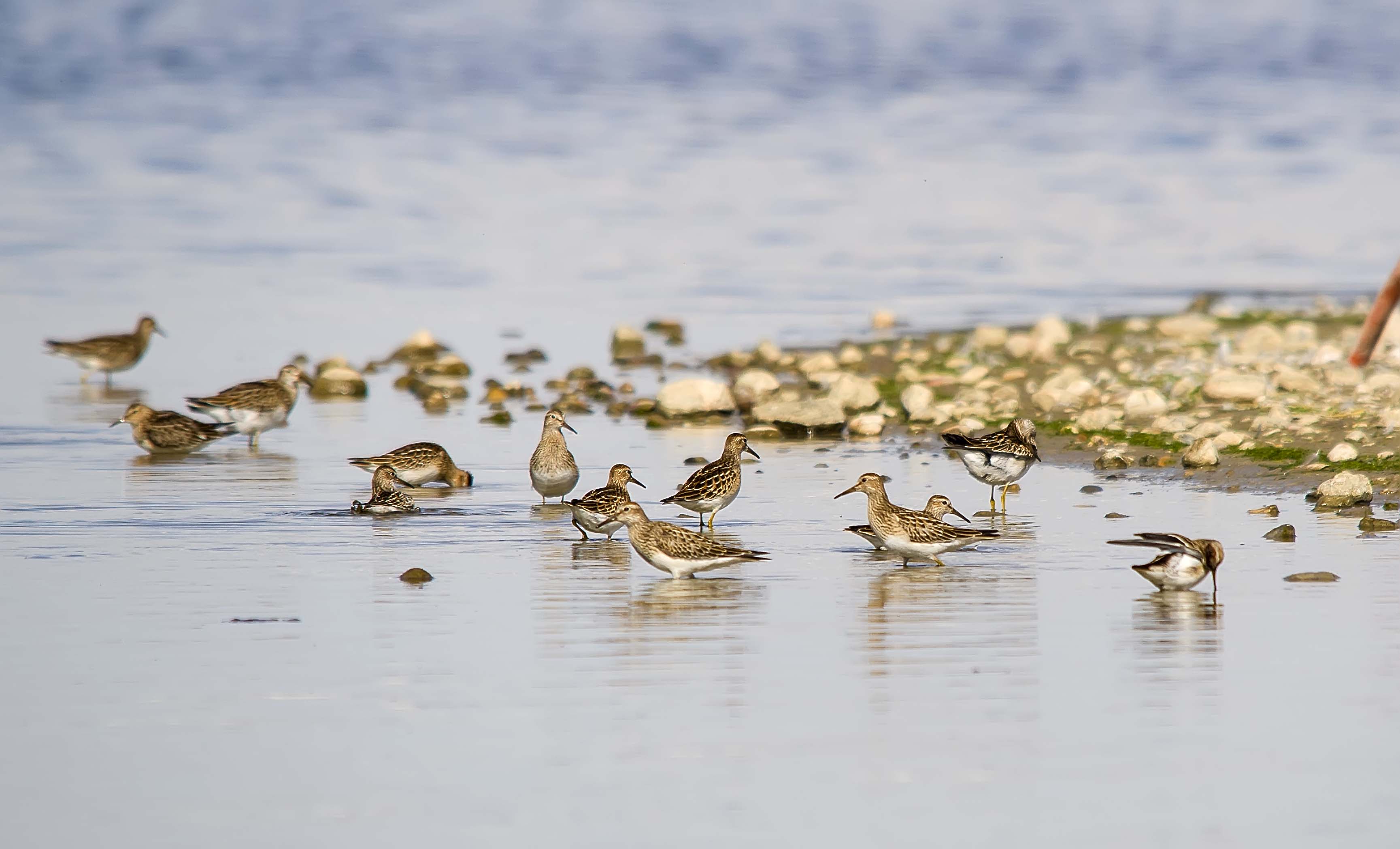
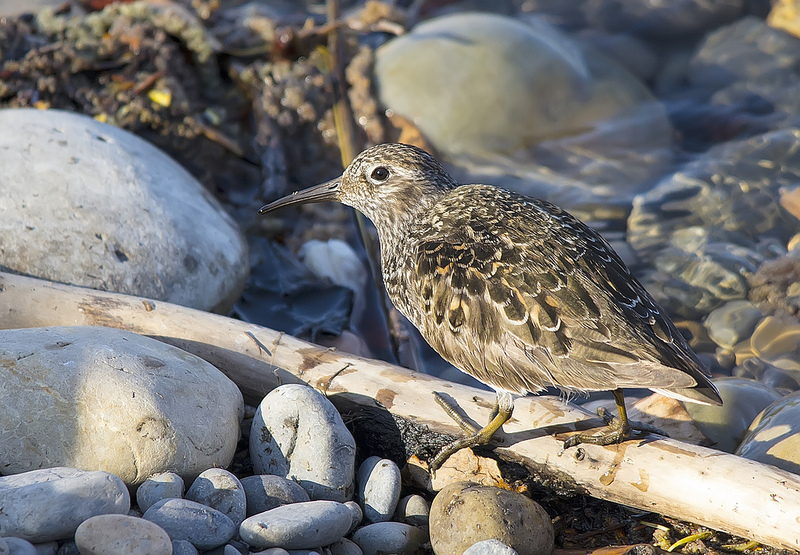
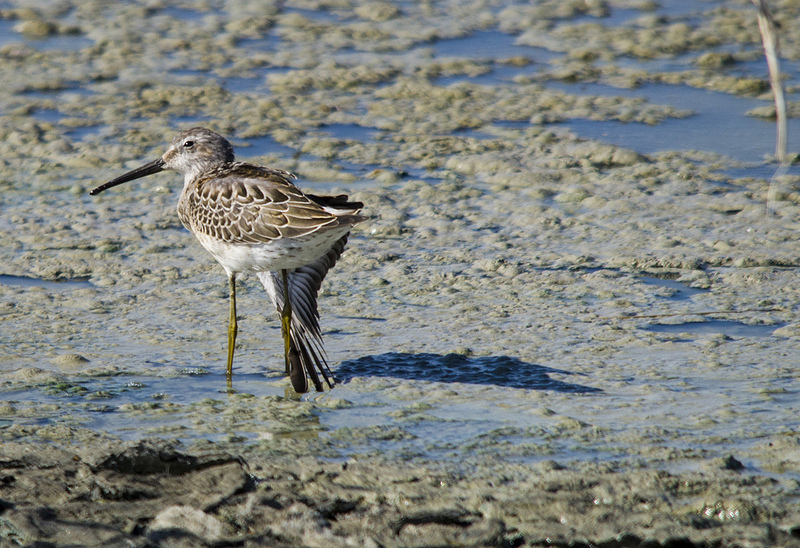


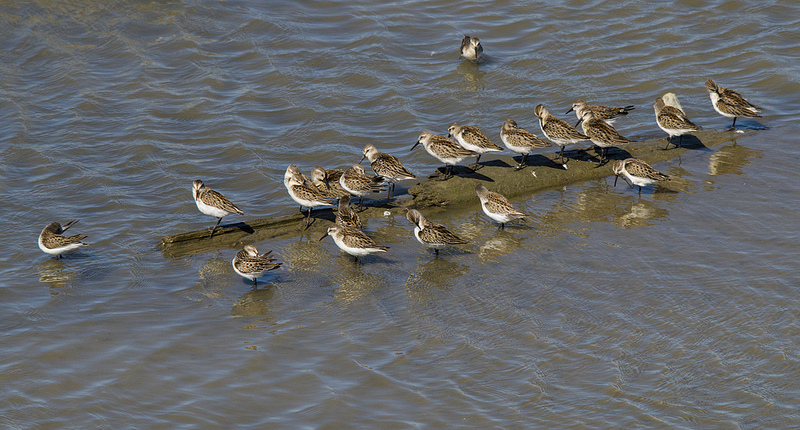
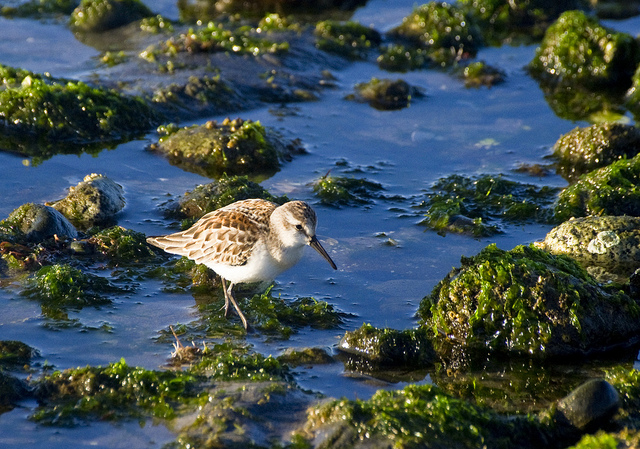



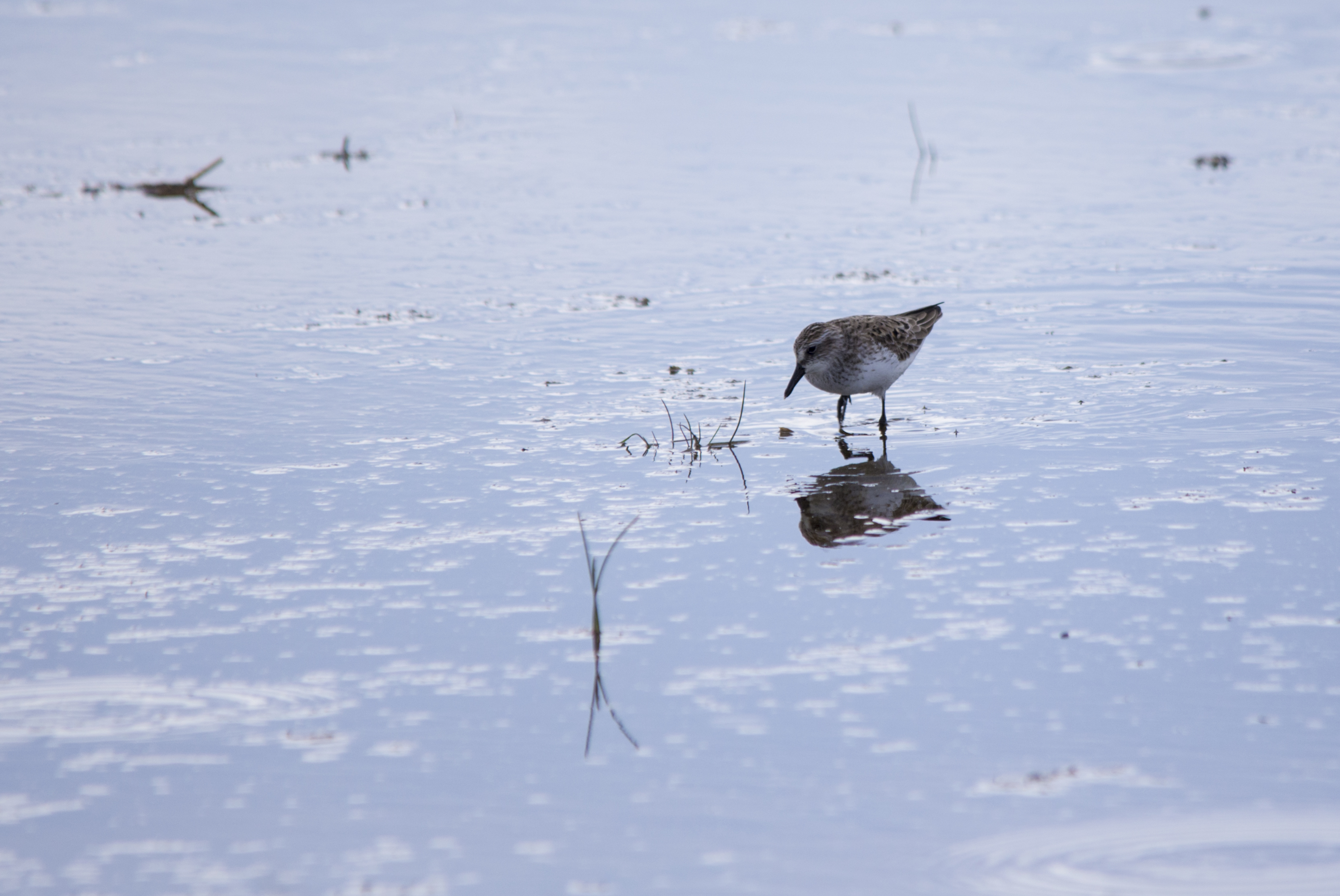
Thanks again for the heads up, Rick! I guess when I originally processed the photos from that weekend I mis-labelled a few of them. I hope the new photos meet your approval! 😉 I do appreciate that though! I am a bit of a shorebird pedant, and I hope I didn’t mislead too many people!
– Dan
Ah! Caught in my own trap! Thanks for bringing that to my attention Rick! After a second look at the photo they’re clearly not Pectoral!
– Dan
Great article. Have another look at those “pectoral” sandpipers, though….